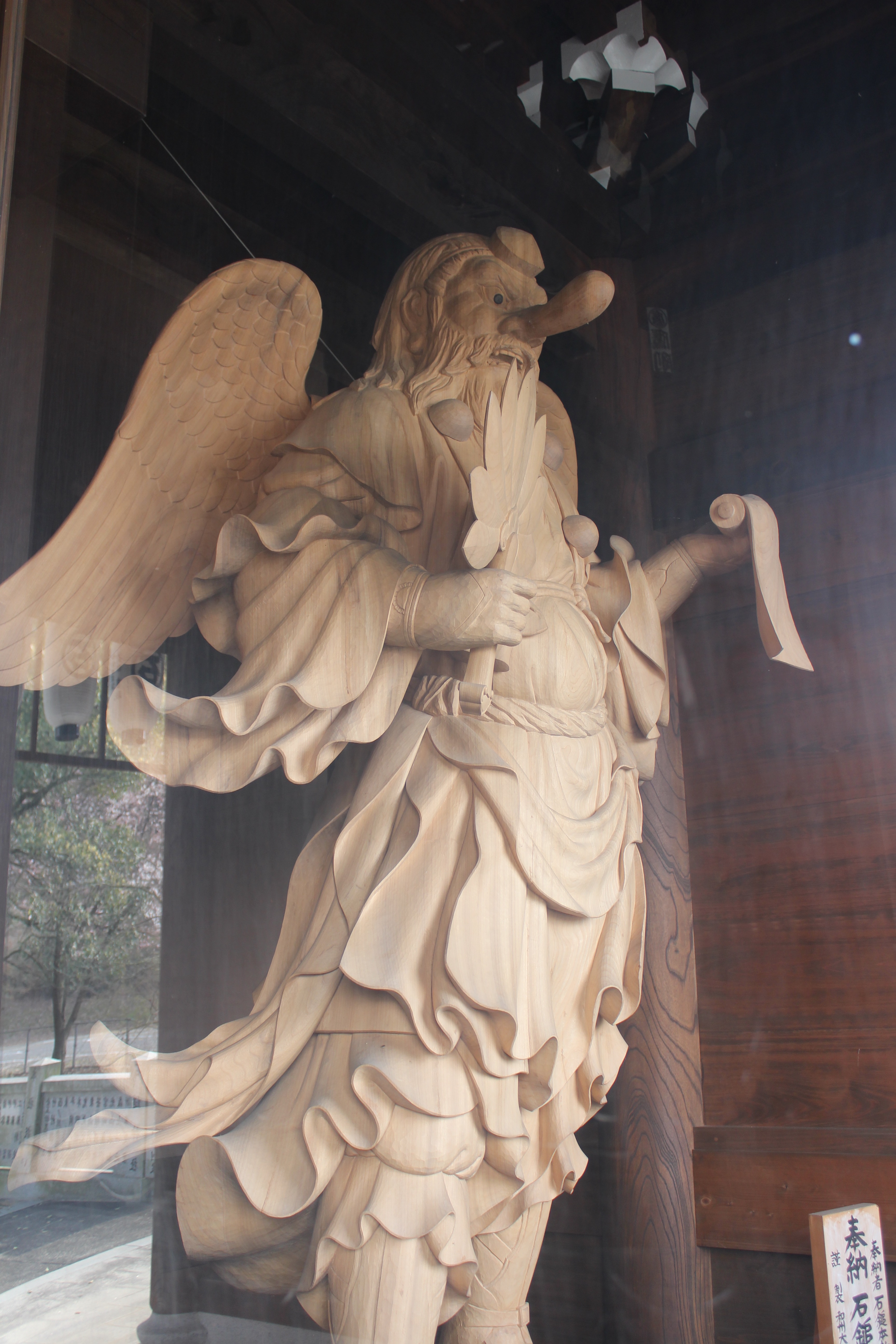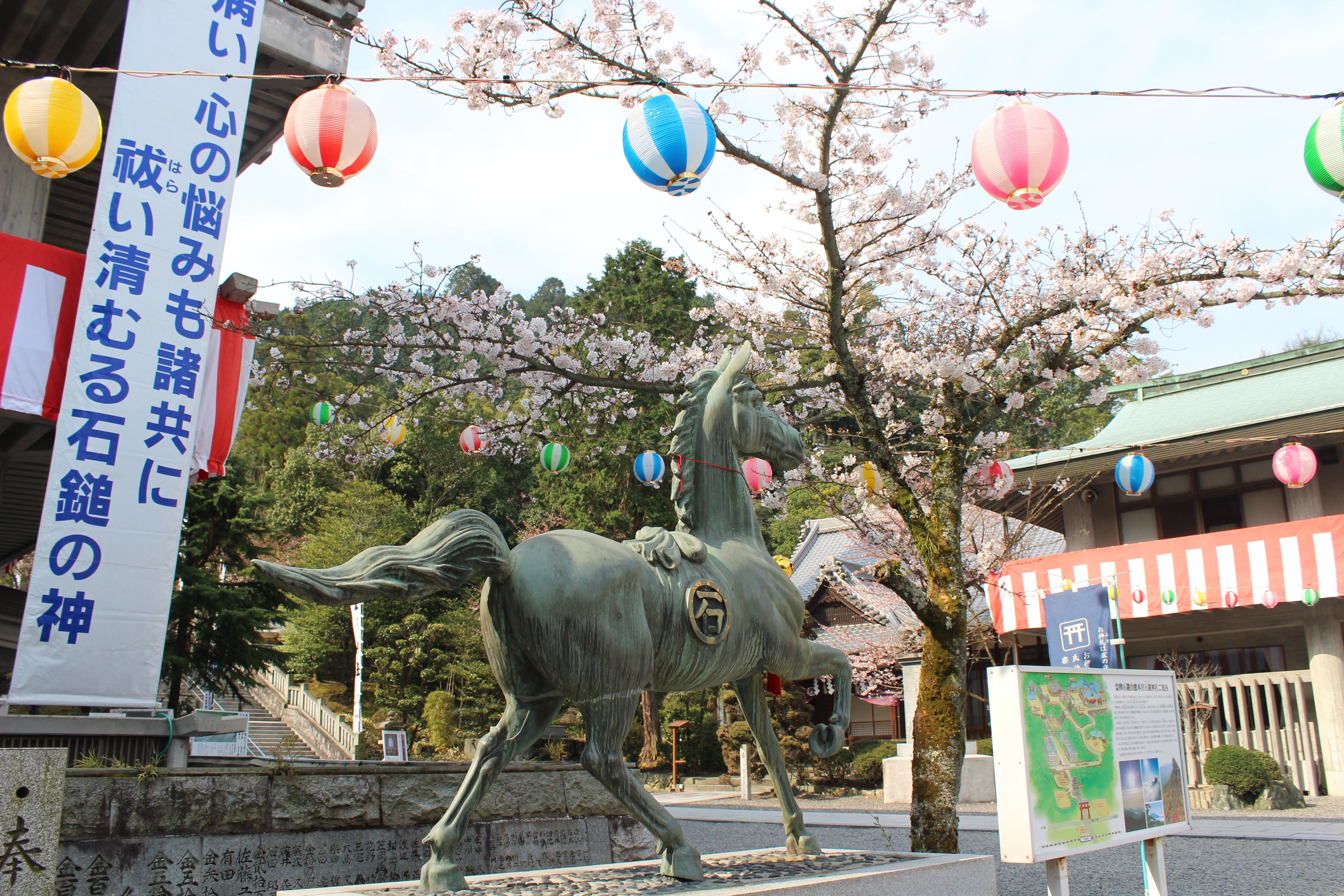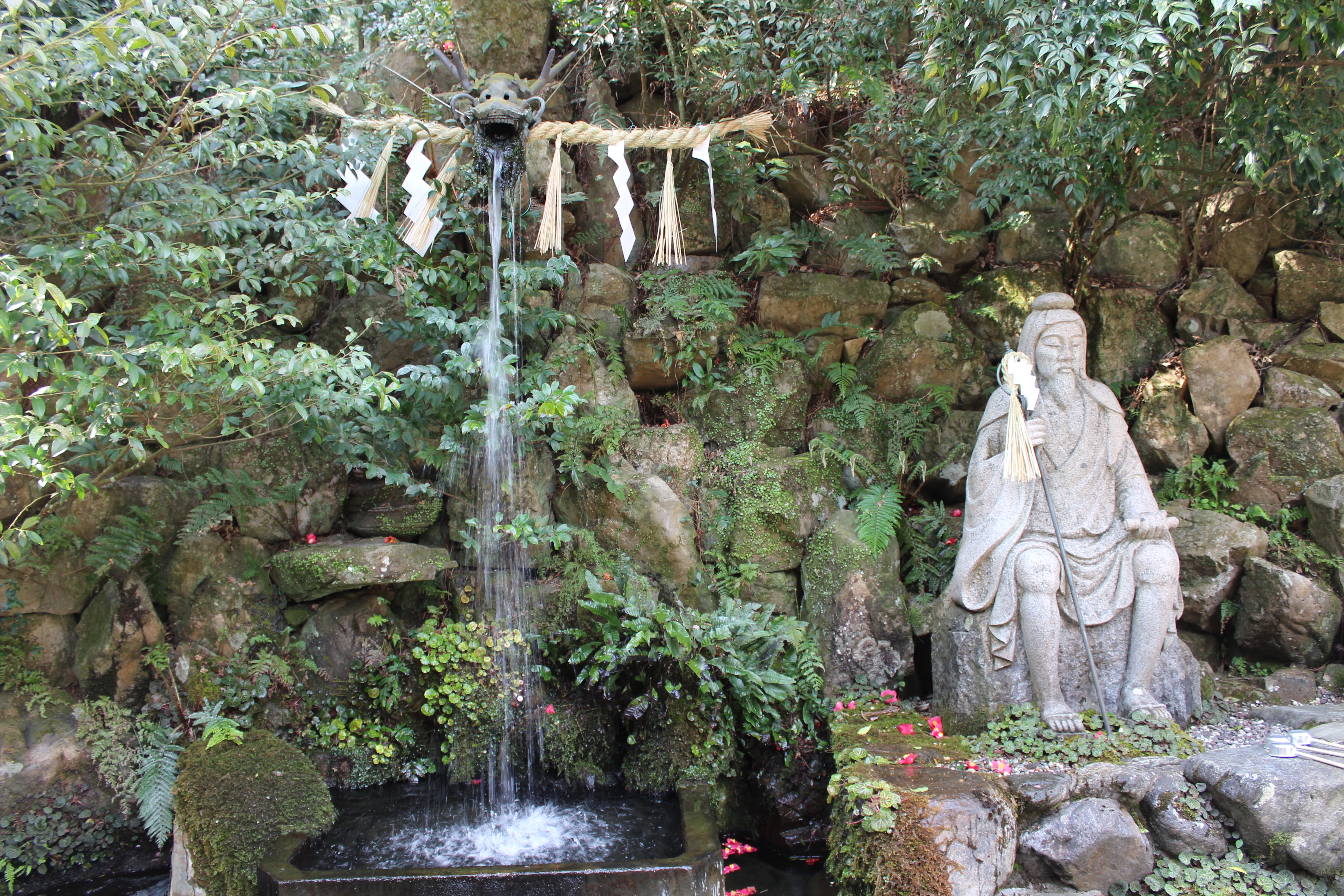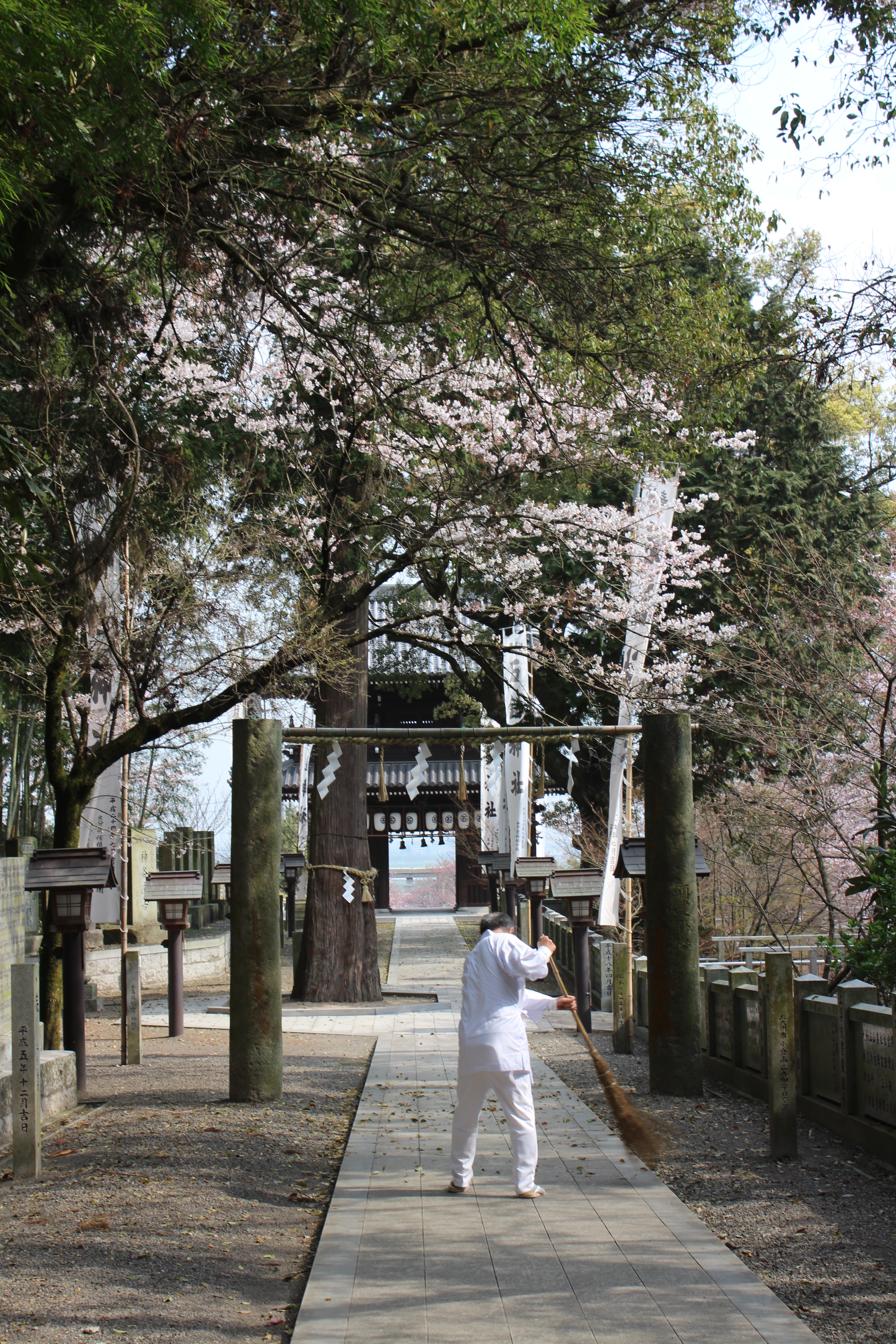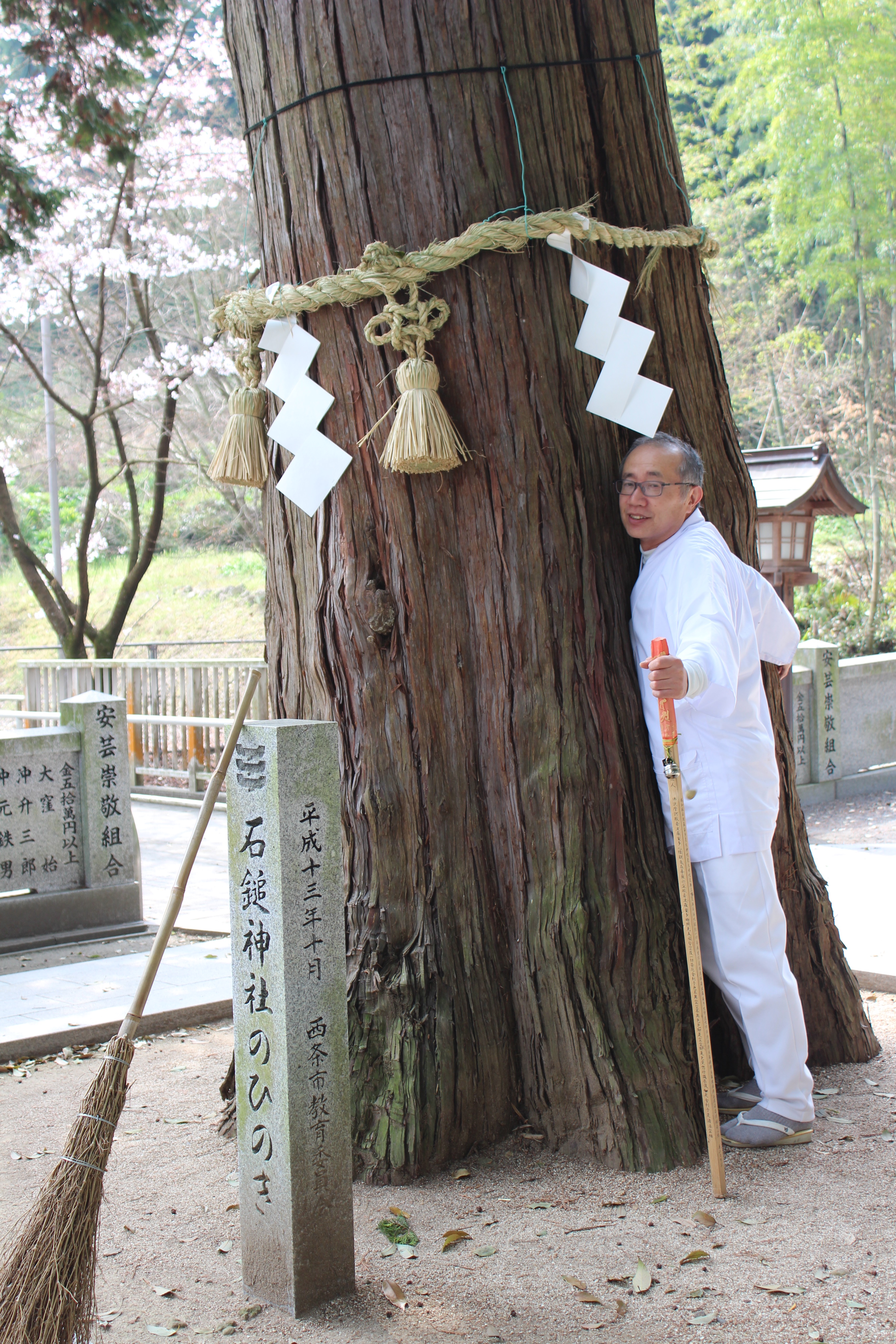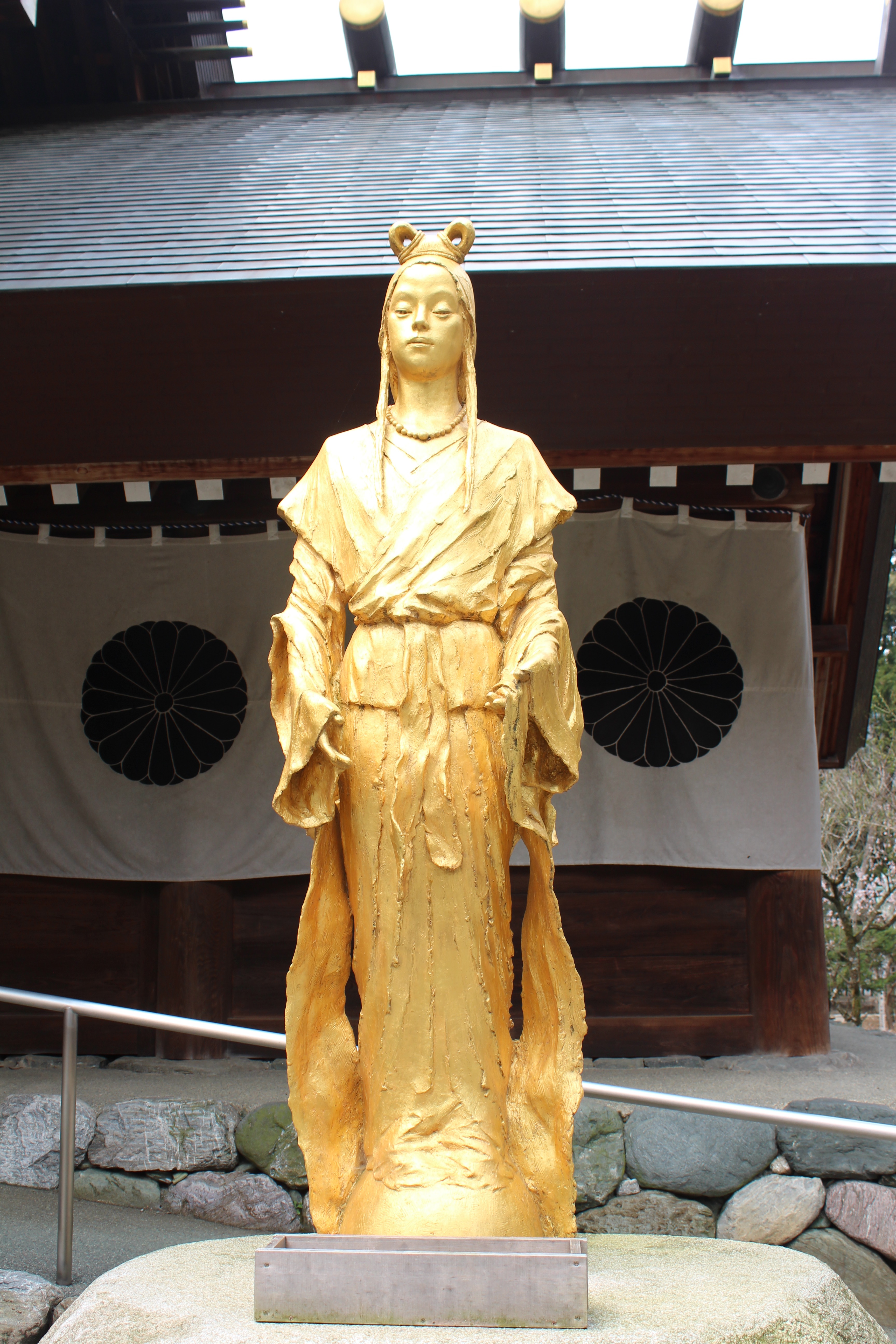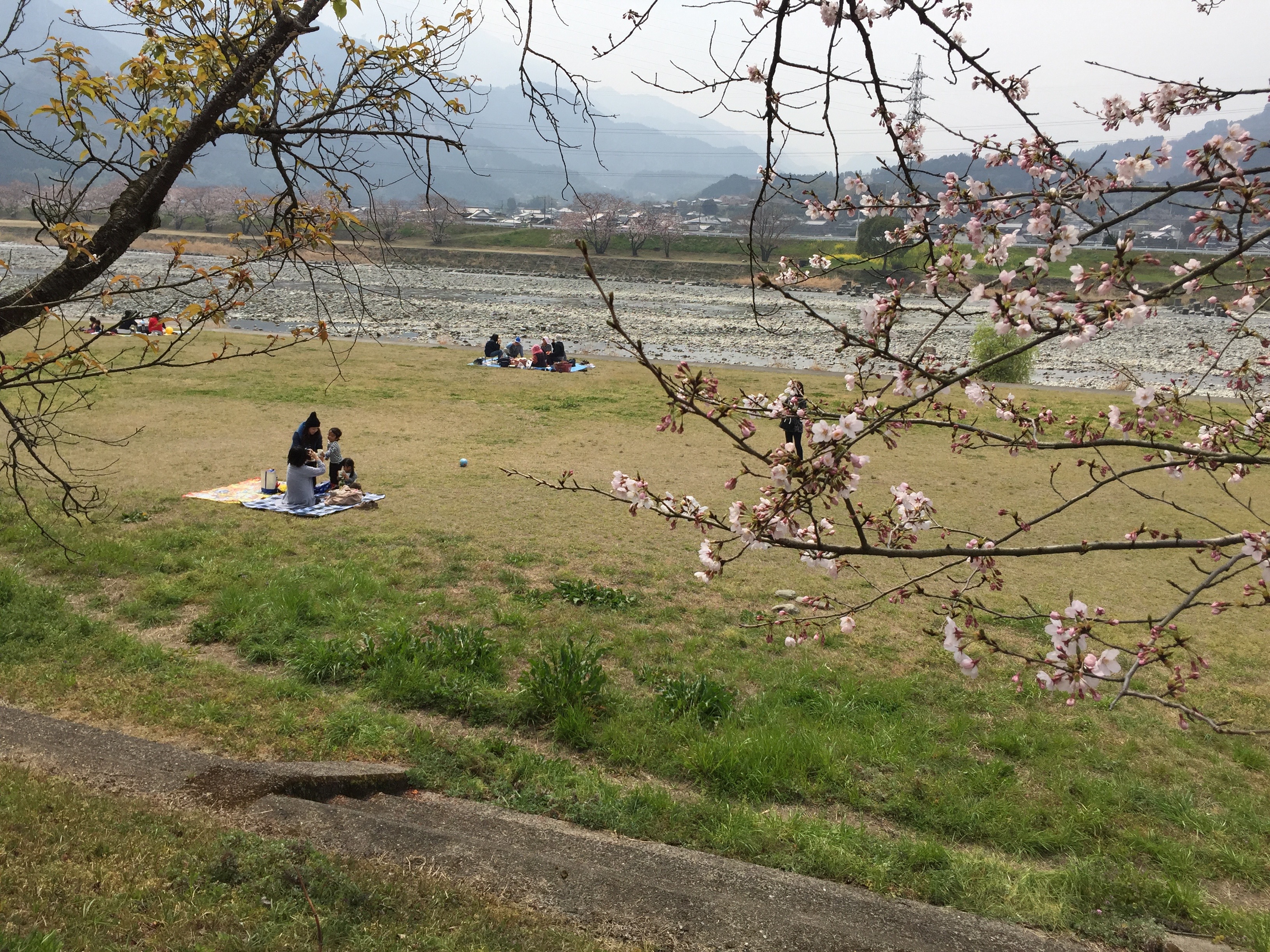Mount Ishizuchi and two Jinjas (temples 63, 64)
At nearly 2000 m, Mount Ishizuchi is not only the highest mountain of Shikoku but
also one of the seven holiest mountains in Japan. The sharp, rocky summit resembles
a hammer, therefore the name Ishizuchi. The mountain is accessible by a cable-car.
At the foot of Ishizuchi stands the Ishizuchi Jinja, a Shintō shrine.
Entrance to the Ishizuchi Jinja with two Koma-inus
(guardian lions, lit. Korean–dogs) in front of the entrance gate
The concept goes back to Chinese guardian lions to ward off evil introduced through
Korea.
A Tengu, one of the guardians inside the gate behind glass
His long nose relates to his hatred of arrogance and prejudice. He holds a feather fan
in his right hand with which he can produce great winds. The origin of the Tengu
also goes back to Chinese folklore.
Although in Shintōism everything has Kami or spirit, the horse has the important
function of being a bridge between the ordinary world and the world of the Kami.
When I visited the shrine, the priests prepared the whole area for the celebration of
Hanami (cherry blossom festival). Colorful lanterns were hanging between trees as
part of the preparation.
The sacred horse with lanterns and a blooming cherry tree
This place is a place of “washing away impurities”.
Sweeping the pathway is an important practice in temples and shrines.
The sweeping priest suggested hugging a very old Cedar Tree. Sacred trees are
considered pillars to the spiritual world.
Hugging the huge Cedar tree with a Shimenawa (rope) wrapped around it
Saijo City is not only well known for its fantastic water taste (many wells are in the
area), but also for the Shrine Festivals. Over 100 portable shrines are carried by float-
bearers in October. The bearers wear traditional outfits. The most important shrine
at this festival is the Isono Shrine.
This nice boy was my guide leading me to the Isono Jinja. We only communicated
with sign and body language.
Statue of Konohasanakuya-Hime, the cherry tree blooming princess
She is the symbol of delicate earthly life and considered an avatar of life in Japanese.
Powerful roots of a Camphor tree surrounded by a Shimenawa
At the shore of the Kamo River, people were celebrating Hanami, Cherry-blossom
Veiwing (lit. Flower Veiwing).
Hanami celebration
.
.
.


